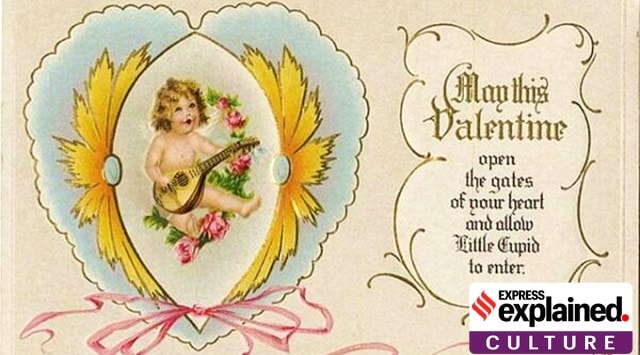Valentine’s Day: Who was Saint Valentine’s, what is the story behind the celebrations?
Valentine, who died in 270 AD, was canonised by the Roman Catholic Church, as he may have also served as a priest who helped Christian couples get married in secret. And the legend grew.
 In ‘A Midsummer Night’s Dream’, Shakespeare makes a reference to Valentine’s Day. (Photo via Wikimedia Commons)
In ‘A Midsummer Night’s Dream’, Shakespeare makes a reference to Valentine’s Day. (Photo via Wikimedia Commons) Valentine’s Day has become a symbol for both celebrating the idea of romantic love and criticisms from a variety of angles, such as its impact on Non-Western cultures and increasing commercialisation.
And while a certain Saint Valentine’s is known for being associated with the day, its origins also have a darker side.
Who was Saint Valentine’s?
Saint Valentine is believed to be a third-century Roman Catholic priest, who died on February 14 in 270 AD. It is said that he defied emperors’ orders and secretly married couples. Soldiers were not allowed to get married because the emperor thought single men were more devoted fighters. Valentine disagreed with the idea. For this defiance, he was beheaded by Emperor Claudius II Gothicus.
But this is not the only theory and another reference to weddings is found. Allegedly, it was an attempt by the Church to spread its influence over Lupercalia, an ancient Roman festival held around the same time. The Roman celebration honoured Faunus, the god of agriculture, as well as Romulus and Remus, the Roman founders. Men would pick names of women from a box, and they would become a couple through the event.
However, Pope Gelasius picked the period of Lupercalia celebrations as the day to remember Saint Valentine towards the end of the 5th century, resulting in the association of Valentine’s Day with love and romance.
How did Valentine’s Day become a global celebration?
Valentine, who died in 270 AD, was canonised by the Roman Catholic Church, as he may have also served as a priest who helped Christian couples get married in secret. And the legend grew. Through the works of Geoffrey Chaucer and William Shakespeare, the concept was romanticised and popularised in Europe and the English-speaking world.
According to the British Library, “The idea that Valentine’s Day is a day for lovers is thought to originate with Chaucer’s Parliament of Fowls, a poem written in the late 14th century. It describes a group of birds which gather together in the early spring – on ‘seynt valentynes day’ – to choose their mates for the year. It seems that the poem sparked a tradition.”
In ‘A Midsummer Night’s Dream’, Shakespeare makes a reference to Valentine’s Day. There is also the reason behind why Cupid, another popular icon, is represented as a child – a break from earlier representations of the Roman god of desire.
The character of Helena, unhappy with the fact that her beloved Demetrius loves Hermia, says, “Love looks not with the eyes, but with the mind,/And therefore is winged Cupid painted blind./Nor hath love’s mind of any judgement taste;/Wings and no eyes figure unheedy haste./And therefore is love said to be a child/Because in choice he is so oft beguiled.”
With industrialisation, handmade paper cards became symbols of the day, according to NPR. “The Industrial Revolution ushered in factory-made cards in the 19th century. And in 1913, Hallmark Cards of Kansas City, Mo., began mass-producing valentines,” it said.
Photos


- 01
- 02
- 03
- 04
- 05



































